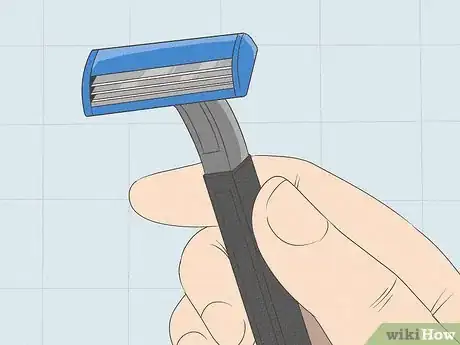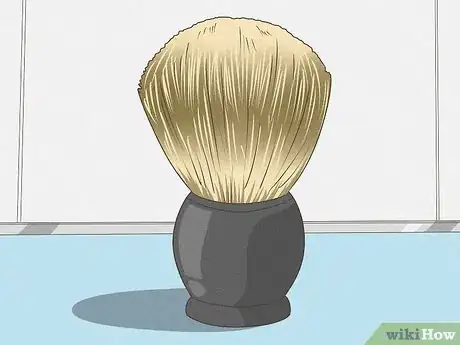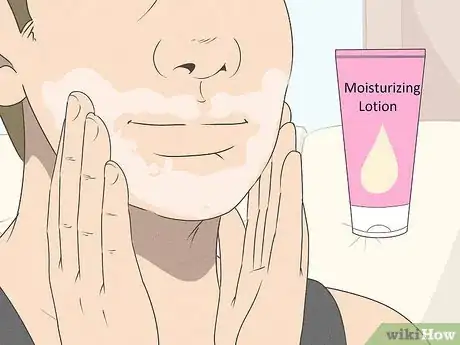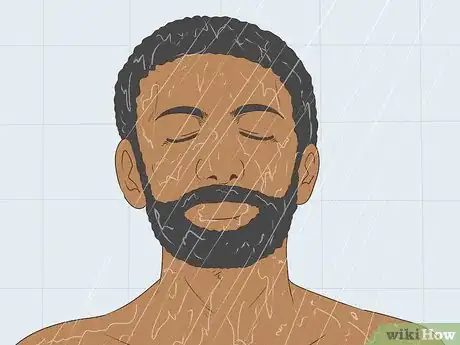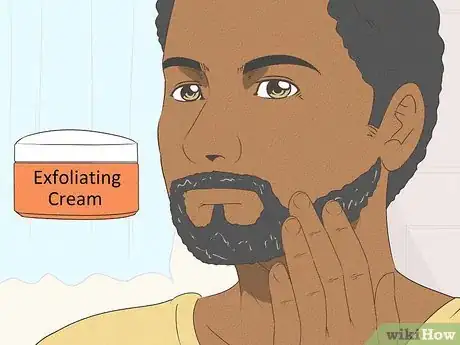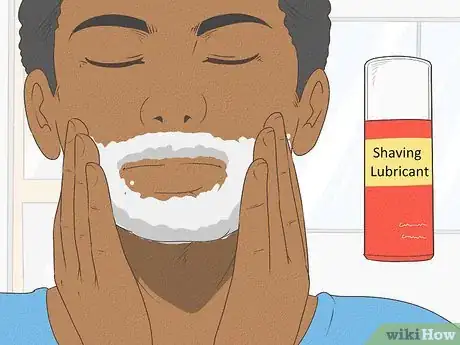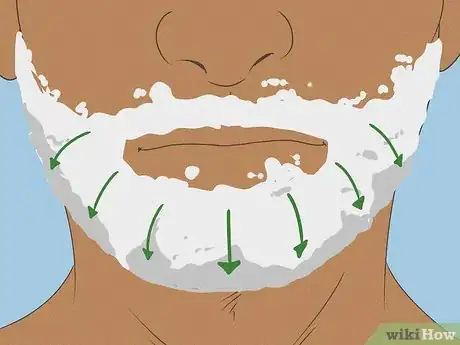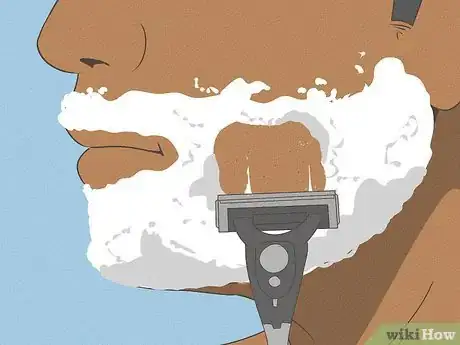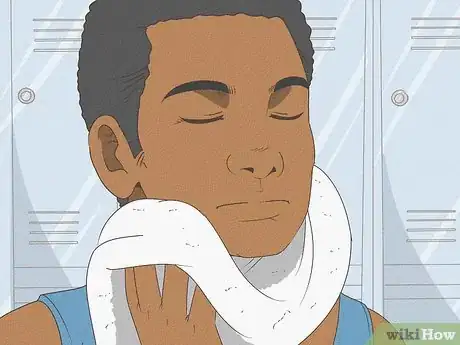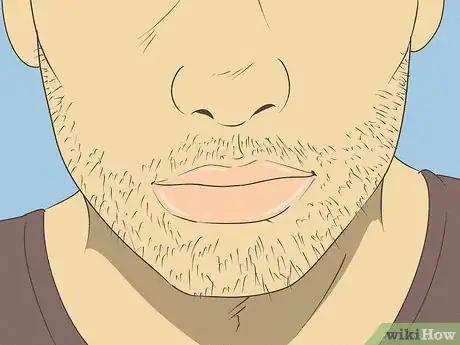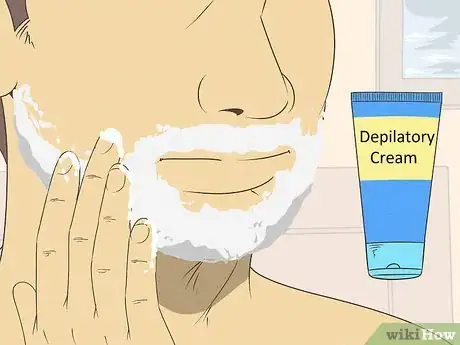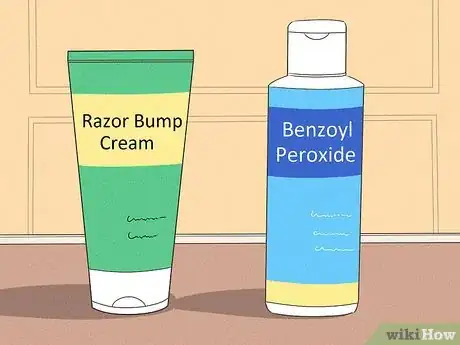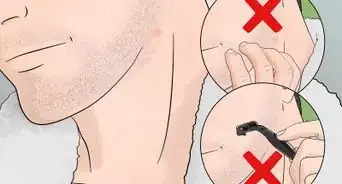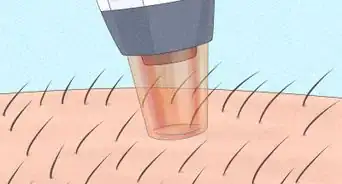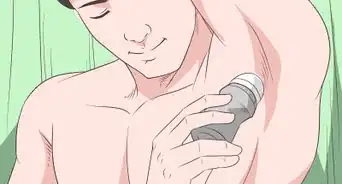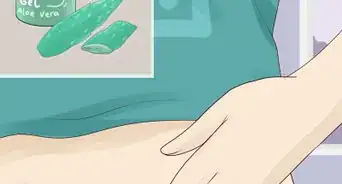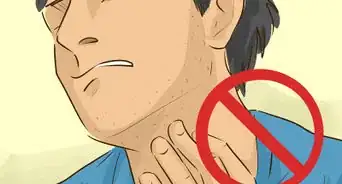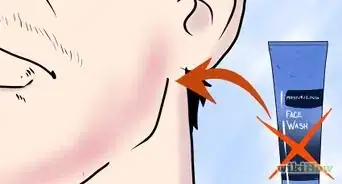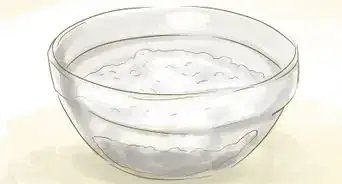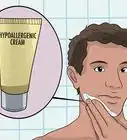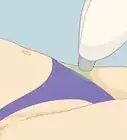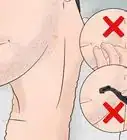This article was co-authored by Alicia Ramos. Alicia Ramos is a licensed aesthetician and the owner of Smoothe Denver in Denver, Colorado. She received her license at the School of Botanical & Medical Aesthetics, with training in lashes, dermaplaning, waxing, microdermabrasion, and chemical peels, and now provides skin care solutions to hundreds of clients.
There are 11 references cited in this article, which can be found at the bottom of the page.
wikiHow marks an article as reader-approved once it receives enough positive feedback. In this case, 100% of readers who voted found the article helpful, earning it our reader-approved status.
This article has been viewed 1,417,099 times.
Razor burn and itchy skin from shaving aren’t fun, but the good news is they’re totally preventable. With the right products and techniques, you can have smooth, irritation-free skin every time you shave, and we’ll show you how! This article will walk you through everything you need to know, plus give you tips for dealing with any current shaving-related irritation you’re dealing with.
Steps
Using the Right Products
-
1Get a new razor.[1] Using a dull razor causes unnecessary irritation to skin under all conditions. Instead of gliding across your skin, a dull razor drags, which causes more irritation. Imagine it chipping away at your skin -- no thank you!
- You can reuse your razor a few times if you take good care of it. Make sure to wash it after every swipe. Don't leave it wet though, as water can erode at the metal, too. Clean it with rubbing alcohol to kill all the bacteria for extra precaution.[2]
-
2Men, purchase a badger brush. You may think lathering up is all you need do, but a badger brush really works in your shaving cream to the hairs, resulting in a cleaner, smoother shave.
- You may also want to look into a safety razor.[3] It's a single blade that provides a clean cut. The blades are cheap, too!
Advertisement -
3Use shaving cream with aloe or other ingredients intended for sensitive skin.[4] Wait until halfway through your bath or shower to apply the shaving cream. Allow it to sit on your skin for at least 3 minutes to soften the hairs. The aloe and other ingredients in the shaving cream create a surface that yields a smoother shave with less irritation.
- Gentlemen, you may be better off with your girlfriend's shaving cream. Products marketed toward women's legs are often a bit more hydrating and skin-softening.[5] You can handle a pink can, right?
-
4Apply hydrocortisone cream or salve after shaving. Do this immediately after shaving to reduce the sting and redness caused by your razor. The salve works to soothe the skin and heal any irritation.
- Refrain from using hydrocortisone cream daily.[6] Regular application causes skin to become used to it, which reduces its effectiveness. Regular use can cause skin to thin.
-
5Put on lotion after shaving. Use a moisturizing, unscented, unperfumed lotion on the shaved area. Lotions reduce the impact of dry skin that results from shaving, which causes many skin irritation symptoms.
- Bag Balm (available at places like Wal-Greens or CVS) is a great product for all things skin-hydrating. In reality, apply lotion all the time, not just after shaving.
Developing Good Habits
-
1Wait until after your warm bath or shower to shave. Your warm (repeat: warm) shower or bath hydrates your skin, and it prepares your skin for shaving with a reduced risk of skin irritation. The softer your hair is, the easier it is to shave off cleanly.[7]
- Let your hairs soften and stand up from the warm water. The moisture and steam from your bath or shower cause your hairs to become soft and to raise against your skin. Softer hairs that are raised against your skin shave much more smoothly than areas that are not prepared for shaving.
- Hold a warm, wet washcloth to the area for at least 5 minutes if you don't have the time or resources to shower.[8]
-
2Exfoliate, exfoliate, exfoliate.[9] Many people are guilty of skipping this super-imperative step. In fact, you should be doing it both before and after you shave. It may seem like a waste of time, but your skin will be smoother and less prone to redness and irritation.
- When you exfoliate before, it aligns your hairs for a uniform shave and sweeps away the dead skin, allowing for a closer shave. When you do it after, it unclogs your pores (from the shaving and creams, etc.) and prevents ingrown hairs (that cause razor bumps).
-
3Always use a shaving lubricant. More on the specifics of creams and the like later, but using something to hydrate your skin is an absolute must. Always use shaving cream.
- Crystal clear, right? Do not ever shave with just water. Soap and water is okay, but a cream designed especially for sensitive, to-be-shaved skin is best. And when you shave the same area twice, be sure to reapply.
- Look for shaving cream that contains glycerin or coconut oil as a base since it will be gentler on sensitive skin.[10]
-
4Shave in the direction of your hair growth.[11] Use razor strokes that go downward. Applying pressure with your razor against the grain of your hair causes irritation and bumps. Generally, this means down.
- Yep, shaving against the grain allows for a closer shave, sure. If that's what you want, go for it. But the likelihood of your skin getting irritated increases exponentially when you do so.
-
5Use short, light strokes. The two sort of work in tandem, actually. When your stroke is short, you tend to be lighter on your skin. If the stroke is too long, you feel as if the razor dulls and you need more pressure to combat that. Resist![12]
- You'll also be washing in between strokes -- so the shorter the stroke, the easier you are on your razor. That's good for your wallet and your skin!
-
6Rinse with cold water and pat dry. Just how warm water will open up the pores, cold water will seal them off, cinching the deal.[13] After the cold water rinse, pat the area dry. Don't rub! Rubbing is just an invitation for disaster. You did it well -- don't mess it up!
Avoiding Further Irritation
-
1Cease shaving. Stop shaving and allow the hair to grow. Try this for a short time, even if it's not possible to do this as a long-term solution. The less often you shave, the fewer chances you have to get irritated skin.
- Even just a few days will help your skin heal itself. If you're in dire straits, get a doctor's note telling school or work that you're free to grow that beard. Or that leg hair -- whichever.
-
2Utilize a depilatory to remove hair. Depilatories dissolve hair at its root within the hair follicle.[14] Using a depilatory reduces skin irritation caused by shaving. However, watch for allergic reactions to depilatories. Depilatories are approved for sensitive skin, but skin allergies do occur.
- In case it wasn't clear, with this you won't be shaving. That's certainly one way to avoid razor burn and bumps!
-
3Put benzoyl peroxide salve or a razor bump cream on shaved areas. Apply 2.5- to 5-percent benzoyl peroxide on your skin immediately after shaving to reduce redness, irritation or bumps. Benzoyl peroxide was originally created as an acne treatment, but it is now a common treatment for the avoidance of razor burn.[15]
- There are a whole bunch of razor bump creams on the market that can be found at your local drugstore, like Bump Stopper and Tend Skin.[2] Use it as a preventative tactic if you are particularly prone to them.
Community Q&A
-
QuestionWhich razor is best to use?
 Community AnswerMen's razors! Since men have to shave their faces, those razors move better on your skin and don't cause as much irritation or bleeding.
Community AnswerMen's razors! Since men have to shave their faces, those razors move better on your skin and don't cause as much irritation or bleeding. -
QuestionWhat sorts of creams or lotions should I apply after shaving?
 Community AnswerTry using natural lotions with no scents or fragrances, as these tend to irritate or "burn" the skin.
Community AnswerTry using natural lotions with no scents or fragrances, as these tend to irritate or "burn" the skin. -
QuestionIs it harmful for my face if I put face cream on after I shave?
 Community AnswerIt depends on the cream. Scentless lotions with few chemicals are good for your skin, but creams with lots of fragrance and chemicals can irritate it.
Community AnswerIt depends on the cream. Scentless lotions with few chemicals are good for your skin, but creams with lots of fragrance and chemicals can irritate it.
Warnings
- Consult a physician about any irritated areas that appear to be infected or don't improve in a few days.⧼thumbs_response⧽
References
- ↑ Alicia Ramos. Skincare Professional. Expert Interview. 12 June 2019.
- ↑ 2.02.1http://www.artofmanliness.com/2009/07/16/how-to-prevent-razor-burn/
- ↑ https://www.artofmanliness.com/articles/how-to-shave-like-your-grandpa/
- ↑ Alicia Ramos. Skincare Professional. Expert Interview. 12 June 2019.
- ↑ http://www.pamf.org/teen/health/skin/pubichairremoval.html
- ↑ https://www.nhs.uk/medicines/hydrocortisone-skin-cream/
- ↑ https://www.medicalnewstoday.com/articles/325213.php
- ↑ https://www.mensjournal.com/style/the-reason-your-barber-puts-a-hot-towel-on-your-face/
- ↑ Alicia Ramos. Skincare Professional. Expert Interview. 12 June 2019.
- ↑ Alicia Ramos. Skincare Professional. Expert Interview. 12 June 2019.
- ↑ https://www.youtube.com/watch?v=V_RTJOLvjyI
- ↑ https://kidshealth.org/en/teens/razor-burn.html
- ↑ https://www.webmd.com/men/features/mens-shaving-tips#2
- ↑ https://www.webmd.com/beauty/cosmetic-procedures-hair-removal#1-4
- ↑ https://www.naturalremedies.org/razor-burn/
About This Article
To prevent skin irritation after shaving, shave right after you take a warm shower so your skin is nice and hydrated. Also, remember to shave in the direction your hair grows, and make sure you're applying a shaving cream before you shave. It helps if you use short, light strokes when you're shaving. Finish by rinsing the area with cold water and gently patting it dry to avoid irritation. For help choosing the best kind of razor and shaving cream for avoiding skin irritation, read on!
